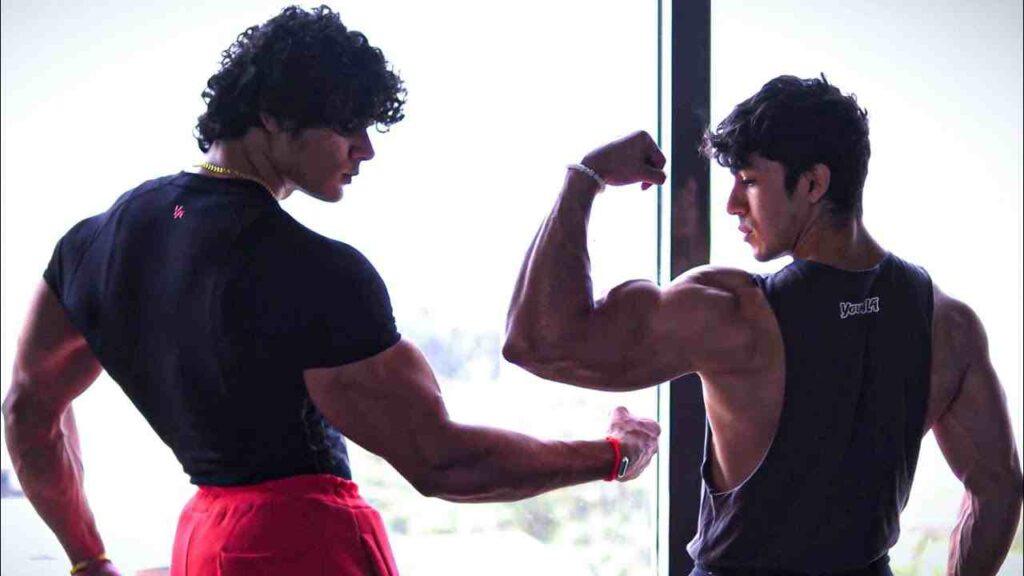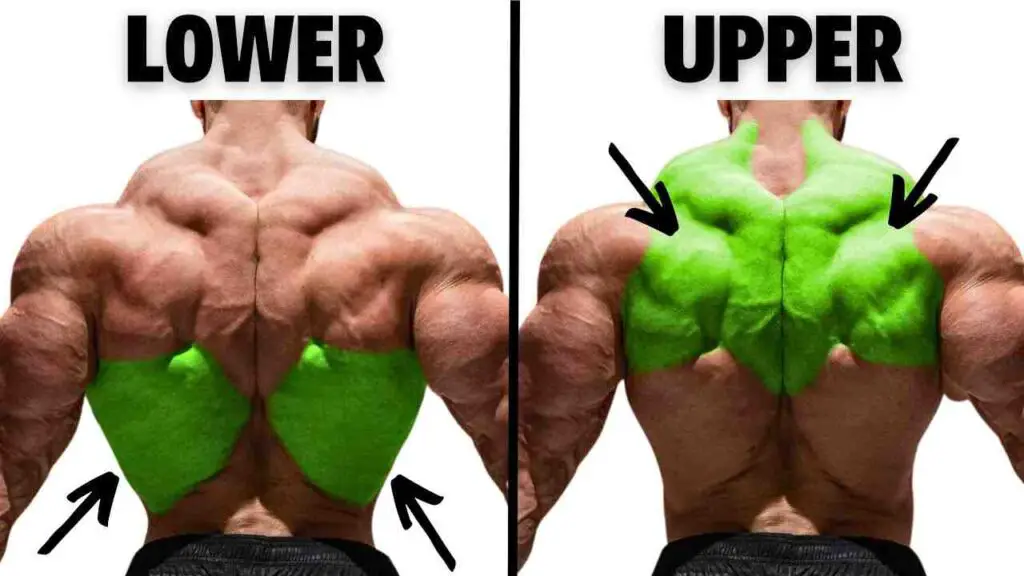Introduction
Welcome to the ultimate guide on compound bicep exercises! Whether you’re a seasoned fitness enthusiast or just starting your journey to stronger and more defined arms, this article is your roadmap to success. In the world of fitness, bicep development is a coveted goal, and achieving it requires the right knowledge and exercises.
SHOP FOR THE ADJUSTABLE DUMBBELL SET ON AMAZON
This guide will walk you through everything you need to know about compound bicep exercises, their benefits, techniques, and even address some common questions to ensure you’re on the path to achieving your fitness aspirations.
Why Compound Bicep Exercises Matter?
Compound bicep exercises matter because they offer several key advantages for individuals looking to build strong and well-defined biceps. Here are some brief explanations of why compound bicep exercises are crucial:
- Efficiency: Compound bicep exercises involve multiple muscle groups, not just the biceps. This means you can work on your biceps and other muscles simultaneously, making your workouts more time-efficient.
- Strength Development: Compound exercises often require heavier weights, promoting overall strength development. This strength gain can translate into improved bicep strength, allowing you to lift heavier weights during isolation exercises.
- Functional Fitness: Many compound bicep exercises mimic real-world movements, enhancing your functional fitness. This can make everyday tasks easier and reduce the risk of injury.
- Balanced Muscle Growth: Engaging multiple muscle groups helps in achieving balanced muscle growth. Neglecting other muscles can lead to imbalances, which may result in injuries and aesthetic asymmetry.
- Metabolism Boost: Compound exercises demand more energy and burn more calories than isolation exercises. This can aid in weight management and fat loss, contributing to leaner and more defined arms.
- Variety and Interest: Incorporating compound bicep exercises into your routine adds variety and interest to your workouts. This can help you stay motivated and avoid plateaus in your training.
SHOP FOR THE PULL-UP BAR ON AMAZON
Incorporating compound bicep exercises into your fitness regimen can lead to more efficient, effective, and balanced bicep development, helping you achieve your fitness goals faster and with fewer risks of injury.
Anatomy of the Biceps
The biceps, often referred to as the “guns” or “biceps brachii,” are a prominent muscle group located in the upper arm. To achieve a comprehensive understanding of the biceps, it’s crucial to break down their anatomy:
Biceps Brachii Muscle
- The biceps brachii is the primary muscle of the bicep group.
- It consists of two heads: the long head and the short head.
- The long head originates from the scapula (shoulder blade), specifically the supraglenoid tubercle.
- The short head originates from the coracoid process, which is another part of the scapula.
- Both heads of the biceps converge to form a single tendon, the biceps tendon, which attaches to the radius bone of the forearm.
Functions of the Biceps
- Flexion of the Elbow: The primary function of the biceps is to flex the elbow joint. This action involves bending the arm at the elbow, bringing the forearm closer to the upper arm.
- Supination of the Forearm: The biceps also play a role in supination, which is the act of turning the palm upward. This motion is vital for everyday activities like lifting objects and rotating the wrist.
Synergistic Muscles
- The biceps often work in conjunction with other muscles to perform various movements. The most common synergistic muscle group is the brachialis, which lies beneath the biceps and assists in elbow flexion.
- Additionally, the brachioradialis, a forearm muscle, also aids in elbow flexion when the biceps are engaged.
Tendon and Attachments
- The biceps tendon, as mentioned earlier, attaches to the radius bone of the forearm. This attachment allows the biceps to exert its force on the forearm, leading to elbow flexion.
- The tendons of the biceps are crucial in stabilizing the shoulder joint during certain movements.
Muscle Growth and Development
- Targeting both the long and short heads of the biceps is essential for balanced muscle development.
- Compound bicep exercises are effective in stimulating growth in both heads due to their involvement in various movements.
SHOP FOR THE FITNESS TRACKER ON AMAZON
Understanding the anatomy of the biceps is fundamental to tailoring your workouts effectively. Compound bicep exercises not only target the biceps but also engage synergistic muscles, resulting in well-rounded arm development. Incorporating exercises that work on both heads of the biceps can help you achieve those coveted bulging biceps and enhanced arm strength.
Top Compound Bicep Exercises
Building strong and well-defined biceps often requires a combination of compound and isolation exercises. Compound exercises involve multiple muscle groups and are effective for overall muscle development. Here are some top compound bicep exercises:
1. Barbell Curls
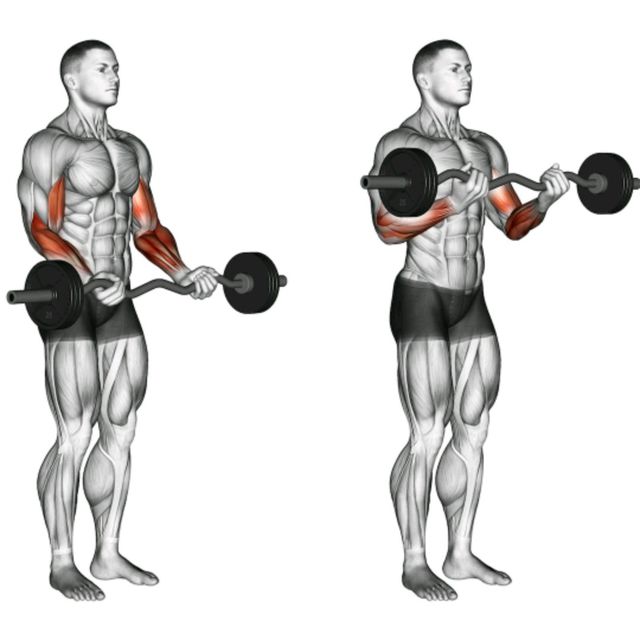
- Barbell curls are a classic compound exercise that targets the biceps, forearms, and even the shoulders. It involves lifting a barbell with both hands, curling it upward towards your chest.
- Techniques: Stand with feet shoulder-width apart, grip the barbell with palms facing forward, and curl it up while keeping your upper arms stationary. Lower the barbell back down slowly.
- Tips: Use proper form, avoid swinging the weight, and control the movement throughout. Start with a manageable weight to prevent injury.
- Benefits: Builds overall arm strength, enhances bicep size and definition, and improves grip strength.
2. Dumbbell Hammer Curls

- Hammer curls work both the biceps and the brachialis, a muscle that adds width to your arms. Hold a dumbbell in each hand with a neutral grip (palms facing each other) and curl them simultaneously.
- Techniques: Stand with feet shoulder-width apart, arms fully extended, and curl the dumbbells upwards without moving your upper arms. Lower them slowly.
- Tips: Keep your back straight, and avoid rocking your body to lift the weights. Use a controlled motion for the best results.
- Benefits: Targets the biceps and brachialis for a well-rounded arm development, adds width to the upper arms, and improves forearm strength.
3. Pull-Ups and Chin-Ups
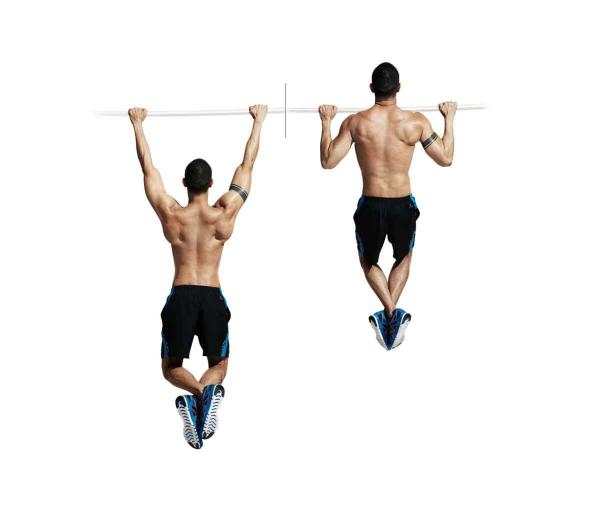
- These bodyweight exercises engage the biceps, back, and shoulders. Pull-ups involve palms facing away, while chin-ups involve palms facing towards you.
- Techniques: Find a sturdy horizontal bar, grip it according to your preference, and hang with arms fully extended. Pull your body up until your chin reaches the bar.
- Tips: Maintain a controlled pace and engage your core for stability. Use assistance if necessary to perform a full range of motion.
- Benefits: Great for overall upper body development, particularly the biceps and back muscles. Improves grip strength and body control.
4. Bent-Over Rows
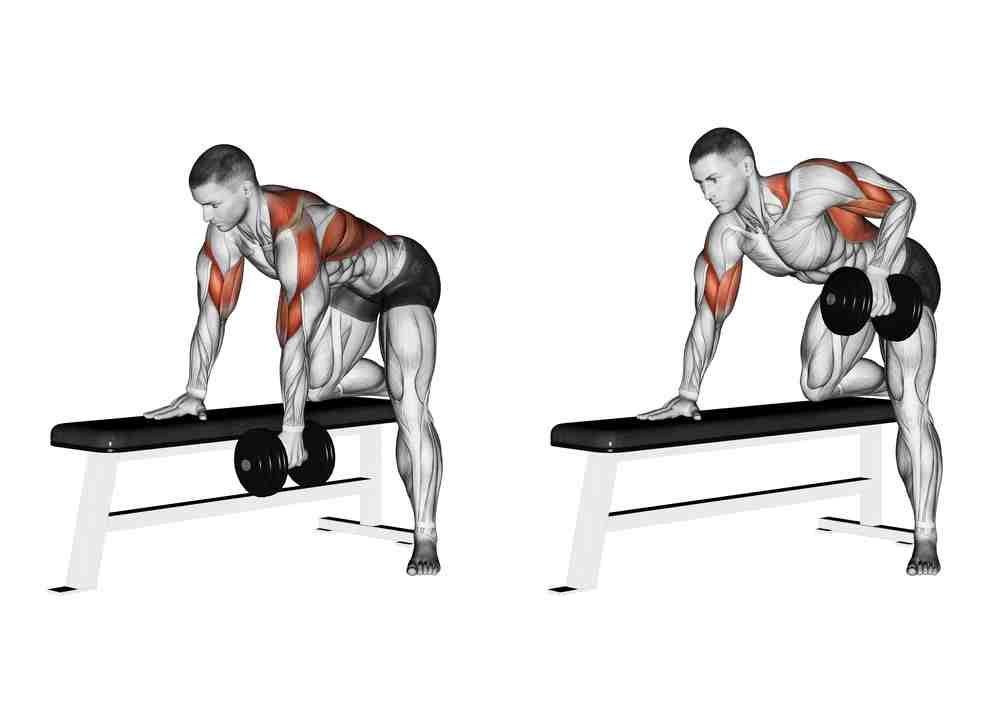
- Bent-over rows primarily work the upper back and lats but also engage the biceps as a secondary muscle group. Hold a barbell or dumbbells with an overhand grip.
- Techniques: Bend at your hips and knees, keeping your back straight. Lift the weight towards your lower ribcage, squeezing your shoulder blades together.
- Tips: Focus on a slow and controlled movement to avoid straining your lower back. Use proper form to target the intended muscle groups.
- Benefits: Enhances overall back development, strengthens the biceps, and improves posture and stability.
5. Close-Grip Bench Press
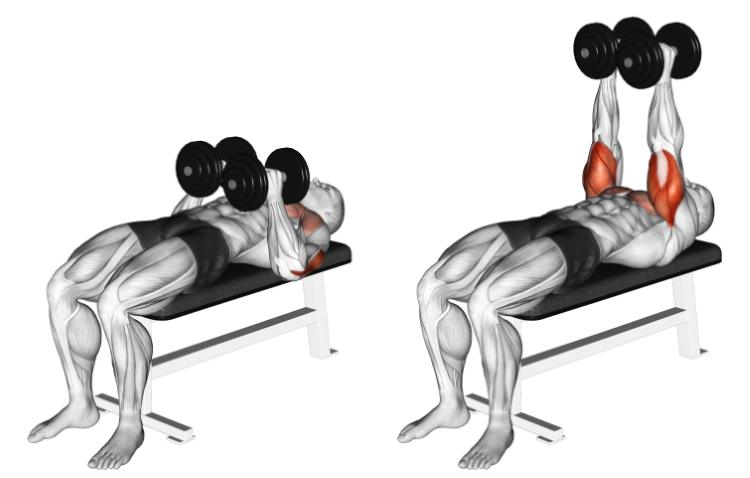
- This exercise primarily targets the triceps but also engages the biceps and chest. Use an overhand grip slightly narrower than shoulder-width.
- Techniques: Lie on a bench with your feet flat on the floor. Lower the barbell to your chest and push it back up.
- Tips: Keep your elbows close to your body to emphasize the biceps and protect your shoulders. Start with a lighter weight to master form.
- Benefits: Strengthens the triceps and adds definition to the inner biceps, contributing to arm thickness and power.
6. Push-Ups
- Push-ups are a versatile bodyweight exercise that engages the chest, triceps, and biceps. They can be performed almost anywhere.
- Techniques: Start in a plank position with hands shoulder-width apart. Lower your body until your chest nearly touches the ground, then push back up.
- Tips: Maintain a straight line from head to heels, and engage your core for stability. Modify the difficulty by adjusting hand placement.
- Benefits: A convenient exercise that strengthens the chest, triceps, and biceps while improving overall upper body endurance.
7. T-Bar Rows
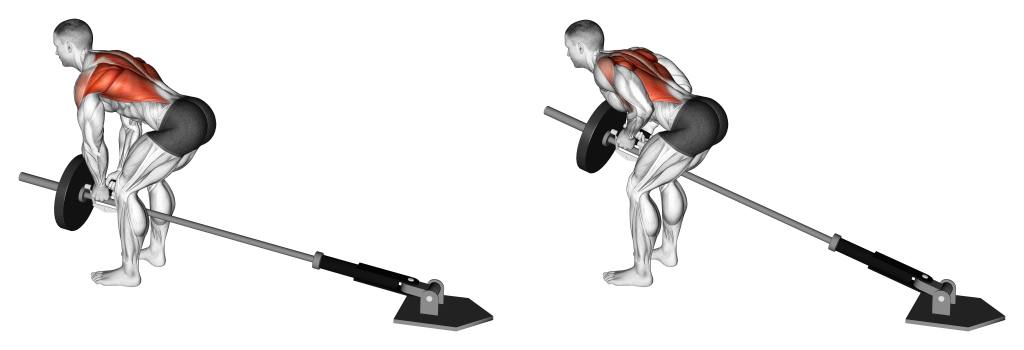
- T-Bar rows primarily target the middle and lower back but also engage the biceps and rear deltoids. Use a T-Bar row machine or landmine attachment.
- Techniques: Straddle the bar, bend at the hips and knees, and grasp the handles. Pull the bar towards your torso, squeezing your shoulder blades together.
- Tips: Keep your back straight, and use controlled motions. Vary your grip width to target different areas of the back.
- Benefits: Excellent for overall back development, including the biceps, and helps build a strong posterior chain.
8. Inverted Rows
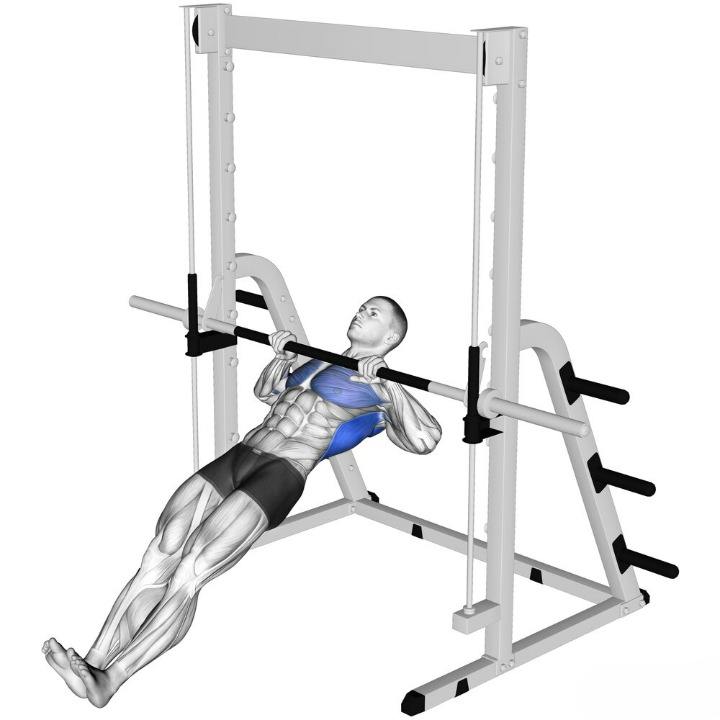
- Inverted rows are a bodyweight exercise that engages the biceps, back, and core. They are performed using a bar or TRX straps.
- Techniques: Lie beneath the bar or TRX straps, grip it with palms facing you, and hang at an angle. Pull your chest towards the bar.
- Tips: Maintain a straight body line and engage your core for stability. Adjust the difficulty by changing the angle or height of the bar.
- Benefits: Strengthens the back and biceps, promotes scapular stability, and is an effective exercise for improving posture.
9. EZ Bar Curls

- Similar to barbell curls but with a specialized EZ bar, this exercise primarily targets the biceps while reducing wrist strain.
- Techniques: Stand with feet shoulder-width apart, grip the EZ bar with palms facing up, and curl it towards your chest.
- Tips: Use an EZ bar to minimize wrist discomfort, and focus on maintaining good form. Avoid excessive swinging.
- Benefits: Isolates the biceps effectively, enhances peak development, and reduces wrist strain compared to regular barbell curls.
10. Push-ups with Hand Sliders
- This variation of push-ups incorporates hand sliders or furniture sliders to increase the intensity and engage the biceps more.
- Techniques: Place hand sliders under your palms in a push-up position. Perform push-ups as usual, sliding your hands outward and inward with each repetition.
- Tips: Keep your core engaged and perform the sliding motion in a controlled manner. Adjust the range of motion to your fitness level.
- Benefits: Intensifies the engagement of the biceps and chest muscles while adding a stability challenge.
11. Zottman Curls
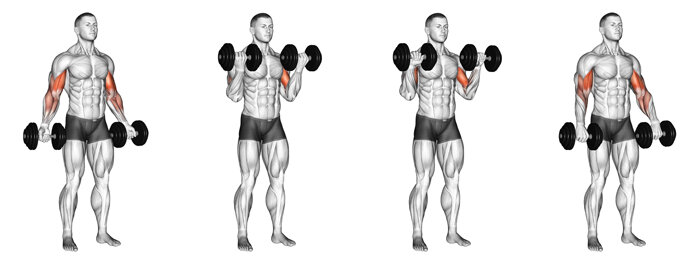
- Zottman curls are a unique exercise that targets both the biceps and forearms. They involve a combination of standard and reverse curls.
- Techniques: Hold a dumbbell in each hand with palms facing up. Curl the dumbbells up with palms up, then rotate your wrists so that palms face down and lower them.
- Tips: Maintain control throughout the movement, and focus on the forearm rotation. Choose an appropriate weight for this exercise.
- Benefits: Develops both the biceps and forearm muscles, contributing to balanced arm strength and aesthetics.
SHOP FOR THE FOAM ROLLER ON AMAZON
Incorporating these compound bicep exercises into your routine will help you achieve a balanced and sculpted upper body. Remember to maintain proper form and gradually increase the weight or difficulty level to continue challenging your muscles and promoting growth.
Nutrition for Bicep Growth
Nutrition plays a pivotal role in bicep growth. To achieve optimal results, it’s essential to provide your body with the right nutrients to support muscle development.
Protein
Protein is the building block of muscle, so it’s important to consume enough protein to support bicep growth. Aim to consume 1.4-1.8 grams of protein per pound of body weight each day. Good sources of protein include:
- Meat: chicken, beef, pork, lamb
- Fish: salmon, tuna, cod, halibut
- Eggs
- Dairy products: milk, yogurt, cheese
- Legumes: beans, lentils, chickpeas
- Nuts and seeds
Carbohydrates
Carbohydrates provide your body with energy, which is essential for fueling workouts. Aim to consume 2-3 grams of carbohydrates per pound of body weight each day. Good sources of complex carbohydrates include:
- Whole grains: oats, quinoa, brown rice, whole-wheat bread and pasta
- Fruits and vegetables: sweet potatoes, bananas, apples, berries, leafy greens
Fats
Fats are essential for hormone production and cell function. Aim to consume 20-30% of your daily calories from fat. Good sources of healthy fats include:
- Nuts and seeds
- Avocados
- Olive oil
- Fatty fish
Supplements
While it’s best to get your nutrients from whole foods, supplements can fill in the gaps. Common supplements for muscle growth include whey protein, creatine, and branched-chain amino acids (BCAAs). Consult with a healthcare professional before adding supplements to your diet.
Timing
In addition to consuming the right foods in the right amounts, it’s also important to time your meals and snacks properly. Aim to eat a meal or snack every 3-4 hours to keep your blood sugar levels stable and provide your muscles with a steady supply of nutrients.
Here is a sample meal plan for bicep growth:
Breakfast:
- Oatmeal with berries and nuts
- Hard-boiled eggs
Lunch:
- Chicken breast with brown rice and vegetables
- Greek yogurt with fruit and granola
Dinner:
- Salmon with sweet potato and broccoli
- Quinoa salad with grilled chicken or tofu
Snacks:
- Fruits and vegetables
- Nuts and seeds
- Hard-boiled eggs
- Greek yogurt
SHOP FOR THE WHEY PROTEIN POWDER ON AMAZON
This is just a sample meal plan, and you may need to adjust it based on your individual needs and preferences. Be sure to talk to your doctor or a registered dietitian to create a meal plan that is right for you.
Avoiding Common Mistakes
Achieving the best results from compound bicep exercises requires not only performing the exercises correctly but also avoiding common mistakes that can hinder your progress or lead to injury. Here are some of the most prevalent mistakes to steer clear of:
- Poor Form: We’ll emphasize the importance of maintaining proper form throughout each exercise to ensure that you’re targeting the biceps effectively and reducing the risk of strain or injury.
- Lifting Too Heavy: We’ll caution against using weights that are too heavy, as this can lead to compromised form and strain on the joints. Finding the right balance between challenging yourself and maintaining good form is key.
- Neglecting Warm-Up and Stretching: We’ll stress the significance of warming up before your workout and incorporating stretching exercises to prevent muscle stiffness and improve flexibility.
- Overtraining: We’ll discuss how overtraining can impede progress and lead to burnout or injuries. It’s important to allow your muscles adequate time to recover between workouts.
- Ignoring Other Muscle Groups: We’ll remind readers not to focus solely on bicep exercises but to incorporate a well-rounded workout routine that targets all major muscle groups for balanced strength and aesthetics.
- Not Listening to Your Body: We’ll encourage readers to pay attention to their bodies and adjust their workouts or rest days as needed. Pushing through pain or discomfort can lead to injuries.
- Inadequate Nutrition and Hydration: Proper nutrition and hydration are essential for muscle growth and recovery. We’ll briefly touch on the importance of fueling your body with the right nutrients.
Compound Bicep Workouts for Immense Biceps
By addressing these common mistakes and offering guidance on how to avoid them, you will be better equipped to optimize your compound bicep exercises, reduce the risk of injury, and achieve your fitness goals more effectively.
FAQs
Q 1. Are compound bicep exercises suitable for beginners?
Ans. Absolutely! Compound bicep exercises can benefit individuals of all fitness levels. However, beginners should start with lighter weights and focus on proper form to avoid injury. Gradually increase the intensity as your strength improves.
Q 2. How often should I include compound bicep exercises in my workout routine?
Ans. It’s recommended to include compound bicep exercises in your routine 1-2 times per week. Overtraining can lead to fatigue and injury, so it’s crucial to allow your muscles to recover adequately between sessions.
Q 3. Can compound bicep exercises help with fat loss?
Ans. Compound bicep exercises primarily focus on muscle building and strength. While they contribute to overall calorie expenditure, they are not the primary tool for fat loss. Incorporating compound exercises into a balanced fitness routine that includes cardio and a calorie-controlled diet is the most effective approach for fat loss.
Q 4. What’s the best way to prevent muscle soreness after compound bicep exercises?
Ans. Muscle soreness, or DOMS (Delayed Onset Muscle Soreness), is common after intense workouts. To reduce soreness, make sure to cool down, stretch, and stay hydrated. Proper nutrition, rest, and gradual progression in your workouts can also help minimize muscle soreness over time.
Conclusion
In conclusion, mastering compound bicep exercises is the key to unlocking the arm gains you’ve always dreamed of. This comprehensive guide has walked you through the importance of compound exercises, the anatomy of the biceps, and the top compound bicep exercises to incorporate into your routine.
By now, you should have a solid understanding of how to perform these exercises with proper form and technique, and you’re well-equipped to design your bicep workouts for maximum efficiency and results.
Remember, consistency is the key to success in any fitness journey. Whether you’re a beginner or an advanced lifter, these compound bicep exercises will help you build strength and size, ultimately leading you to achieve your fitness goals.

Good day, and welcome to Fitthour. My name is Shubham Vijay, and I am a certified personal trainer and nutrition coach with 6 years of experience in the fitness industry. At Fitthour, we specialize in types of training, such as strength training, cardio, or HIIT, and our mission is to help clients achieve their fitness goals and improve their overall health.

